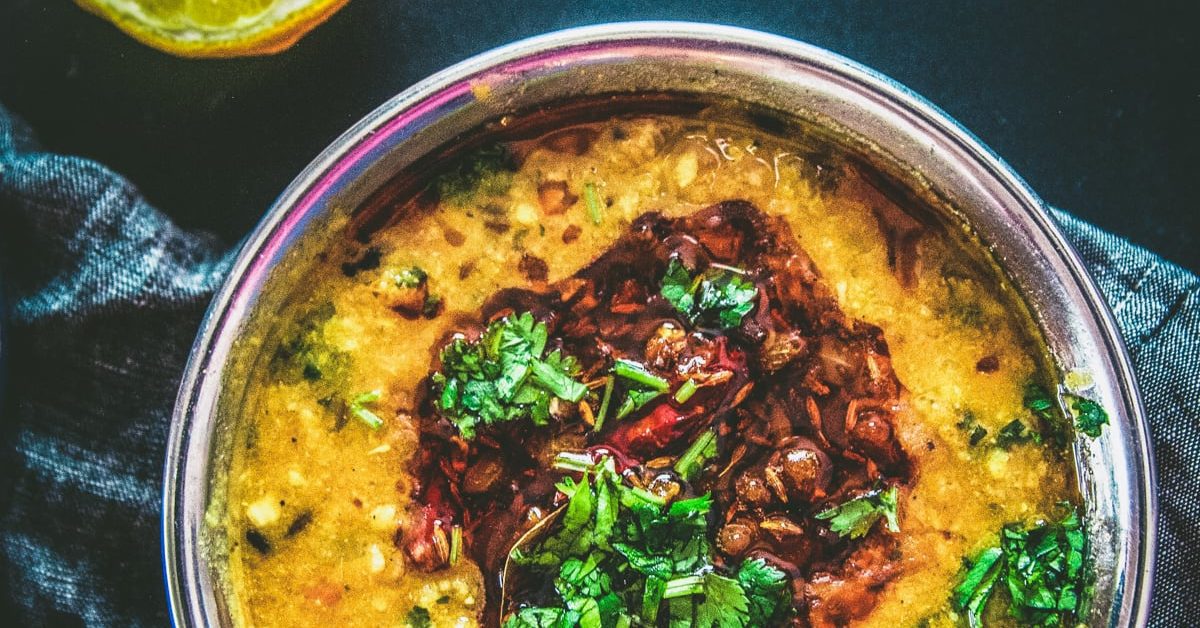Tadka is a technique used in cuisine to add a burst of flavor and aroma to dishes. Also known as tempering, Tadka involves heating oil or ghee and adding a combination of spices. The resulting mixture is poured over the prepared dish, infusing it with rich and aromatic flavors.
If you want to learn how to make perfect tadka, you have come to the right place.
While each tadka is remarkable, here is a short manual for how I approach making it using cooking techniques; different cooks might have various strategies. We hope you like our guide on how to make tadka.
How to Make Tadka at Home
Tadka, also known as “tempering,” is a popular cooking technique in Indian cuisine where spices are heated in oil or ghee to release their essential flavors, and then added to a dish.

A well-made tadka can elevate the flavor profile of dals, curries, and various Indian dishes.
Here’s how to make a perfect tadka:
Ingredients
- Oil or ghee
- Mustard seeds and/or cumin seeds
- Dried red chilies (broken into pieces)
- Asafoetida (hing) – a pinch (optional)
- Curry leaves (optional)
- Finely chopped garlic or ginger (optional)
- Green chilies, slit (optional)
- Turmeric powder (optional)
Steps to Make Home Tadka
- Choose the Right Pan: A small frying or tadka pan is ideal because it submerges the spices in the oil or ghee.
- Heat the Oil/Ghee: Place the pan on medium heat and add fat. Allow it to heat up, but not to the point where it’s smoking.
- Add Mustard and/or Cumin Seeds: Once the oil or ghee is hot, add the mustard and/or cumin seeds. They should sizzle upon contact. Wait for the mustard seeds to pop and the cumin seeds to brown slightly. This will take about 30 seconds to a minute.
- Add Dried Red Chilies: Drop in the broken dried red chilies. They’ll turn a darker color quickly, so ensure they don’t burn.
- Incorporate Aromatics: If you’re using garlic, ginger, or green chilies, add them now. Fry until golden brown, but be cautious as they can burn quickly.
- Add Curry Leaves: If you use curry leaves, add them after the aromatics. They will stumble upon hitting the hot oil, releasing their fragrance.
- Sprinkle Asafoetida and Turmeric: Sprinkle them in now if you’re using asafoetida and turmeric. Stir quickly, ensuring they don’t burn.
- Pour the Tadka: Once the spices are well-tempered and aromatic, immediately pour the tadka over your dish (like dal or curry). Cover the dish to trap the aromas.
- Serve: Mix the tadka into the dish if necessary, and serve hot.
The Unique Blend of Flavors in Each Home Tadka Recipe
While fat is the conveyance vehicle and, on certain occasions, gives its layer of flavour, it’s the mix of flavours utilized that makes each tadka interesting.
Tadka is directed as much by formula as by private inclination; each home has a unique blend of flavors they like to utilize.
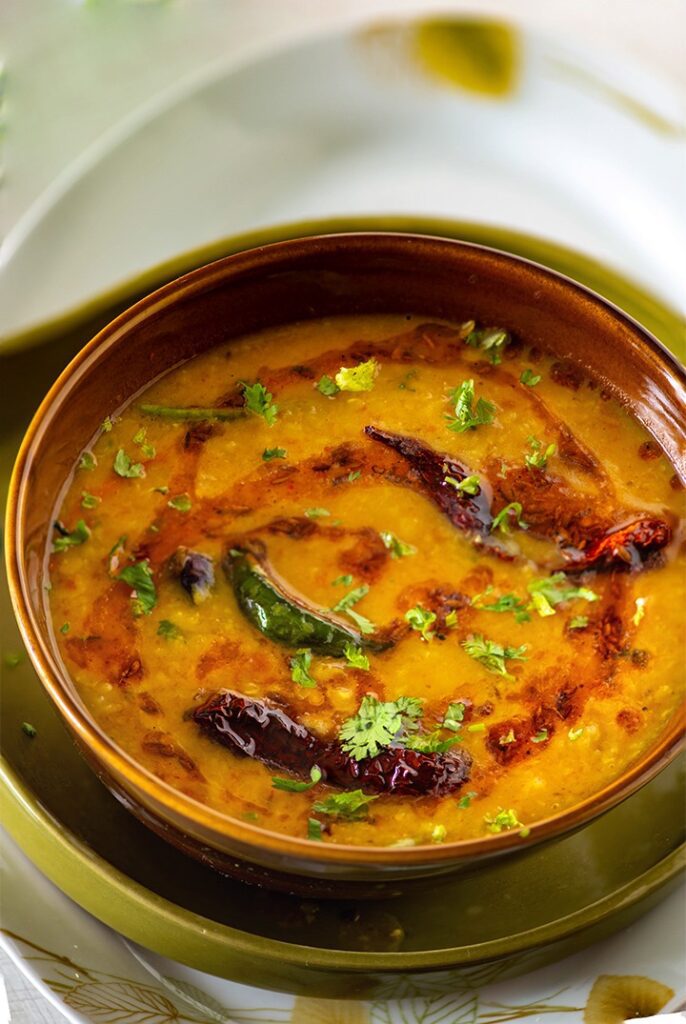
Some tadka equations are preferred for certain dishes over others. Two notes on flavors and new fixings:
- Whole zest seeds like cumin and coriander, and a few vegetables (for example, urad beans and peas like split pigeon peas or dal) add surface and can be utilized straightforwardly. Yet, they can likewise be gently broken to help the oil enter and disintegrate the flavour substances inside their shells.
- Crushing a zest separates it into numerous, more modest particles, expanding its uncovered surface region. Subsequently, ground flavours will cook quicker and discharge their flavour atoms more rapidly than when cooked in their entire structure.
1. Mustard Seeds
Small and round, mustard seeds have a place with plants that incorporate cabbages and leave a wasabi-like sensation on the tongue.
In cooking, dark and earthy color mustard seeds can be utilized reciprocally. However, white or yellow mustard seeds are generally not used, as they taste more fragile in the examination. They likewise add a nutty smell to the oil alongside the surface.
2. Green and Black Cardamom Pods
These units should be broken gently, in a mortar with a pestle, for instance, before they are added to the hot fat.
3. Cinnamon
Cinnamon sticks give a warm and wonderful smell to hot oil. In Indian cooking, cinnamon typically alludes to the cassia bark, yet you can utilize natural cinnamon, assuming you have that close by.
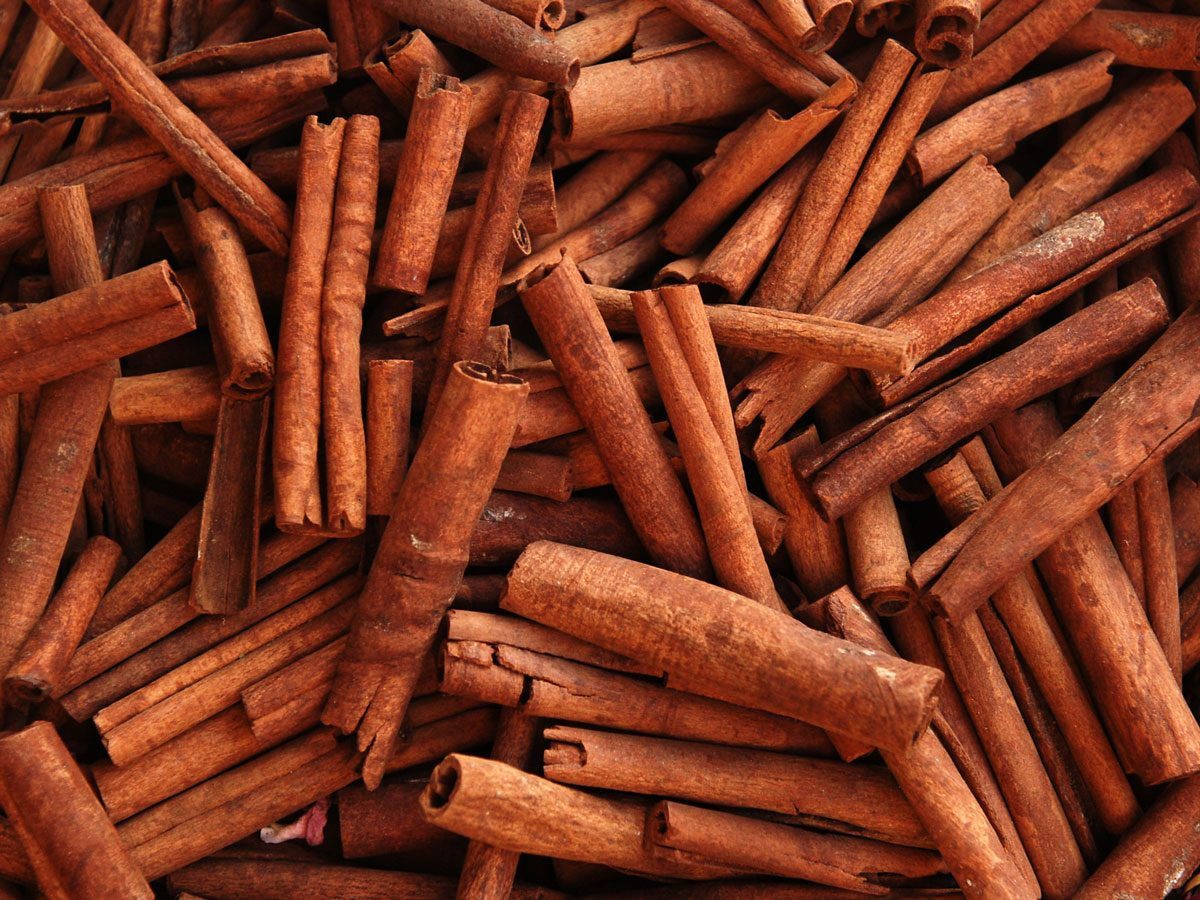
Their smells are unique; I view the last option as a smidgen more flower. Ground cinnamon can likewise be utilized in a tadka, giving a more exceptional flavor. (I use 1/2 teaspoon of ground cinnamon for each 1-inch [2.5-cm] piece of cinnamon stick.)
4. Turmeric
This root contains the fat-solvent color curcumin, which will turn the oil a bright yellow-orange. Generally, ground turmeric is used in Tadka; in any case, you can cut new turmeric into thin strips and add it to the hot oil, like ginger. Heat likewise progresses the sharpness of wild turmeric.
Lentils, some Beans, Split-pigeon peas, and hulled urad dal are added to tadka, particularly in South Indian cooking, and used to decorate coconut chutneys. A teaspoon or two of dried uncooked lentils will be delivered crunchy and grant the oil a nutty fragrance.
5. Asafetida
Also known as Hing, this is the dry plastic obtained from the base of the Ferula plant. It’s sold as a ground powder with a slight yellow hint that it creates as it ages away.
At the point when crude, it conveys a smell that some see as upsetting.
Yet when warmed in hot fat, it goes through a compound change and creates a fragrance that is the same as garlic and onions. Add asafetida after adding entire flavors to a tadka, as the sleek sap needs a plentiful chance to uncover its sweet-smelling character.
6. Onions and Shallots
When daintily cut and added to the hot fat, these alliums add aroma and flavor to the completed tadka. They will turn firm or stay delicate depending on how long you cook them and how daintily you cut them.
The sugars inside these vegetables go through caramelization, and the Maillard response delivers clashing-tasting substances and toffee-shaded colors. Both function admirably. However, I favor shallots because of their more modest size.
7. Ginger
Ginger adds a refreshing smell, whether cut into slender, fine strips, minced, or ground. Fresh ginger gets its hotness from gingerol, which is fat-dissolvable. Add ginger cautiously, as it has tremendous water inside to spray and falter as it meets the hot fat.
8. Chilies
Both new and dried chilies can be utilized in a tadka. Try to slice the chilies to permit the hot oil to come into contact with the hotness, creating capsaicin concentrated inside. The thin film that lines the pepper’s middle cavity and the seeds.
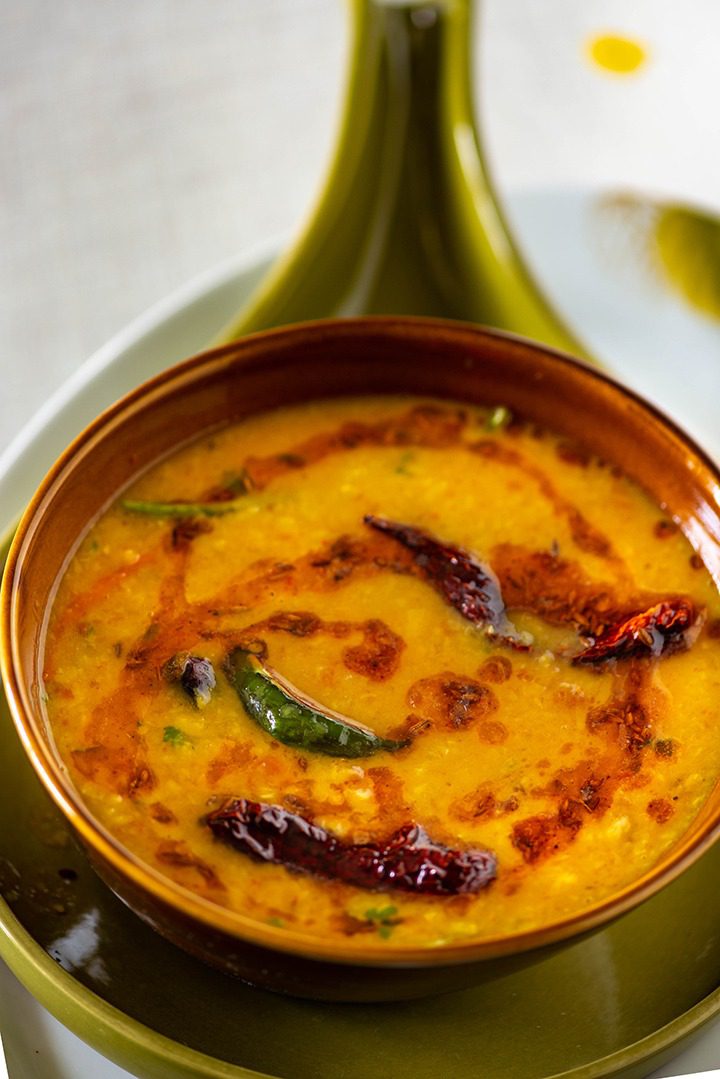
New chilies can be sliced down the middle across their length or slashed into slight cuts and added to the hot fat. Assuming you utilize whole, dried chilies. You can sever the tail or leave it. However, I suggest tearing or cutting the stew so the hot oil can reach inside and extricate those flavour substances.
9. Dried Kashmiri Chilies
They are frequently used for their milder hotness and splendor shading, yet more sultry dried chilies are likewise used in a tadka. I like to involve bean stew chips from Aleppo or Maras peppers for their splendid shading and fragrance. Dried chilies can be consumed quickly than new chilies.

So add them close to the furthest limit of cooking the tadka. And if you use bean stew pieces or ground chilies. I suggest adding them when you take the oil off the heat. The hotness from the hot fat will keep on extricating the flavours from the bean—stew pieces without the danger of burning them.
10. Curry Leaves
Priced for their extraordinary fragrance and the crunchy surface of their leaves as they fresh up in the hot fat, curry leaves are better known in South Indian cooking. I lean toward new curry compared to the dried ones since they have a more grounded fragrance.

Yet when I add them to the hot oil. I promptly cover the pot with a top because the dampness in the leaves can make the oil falter. New leaves have a more articulated flavor than dry ones. So, assuming that you’re subbing dried curry leaves for new, You’ll have to twofold or triple the amount of leaves.
11. Sound Leaves
Fresh or dried Indian cove leaves (tej patta in Hindi) can be added to the hot fat to bestow a cinnamon-like smell. Sweet European Cove leaves can be utilized when there’s no other option. Yet they appear to be unique and taste more herbaceous.
12. Garlic
Fresh garlic is here, and there added to the tadka. The synthetics answerable for the hotness and smell in garlic are fat-solvent. So they disintegrate in the hot fat. Garlic is consumed effectively.
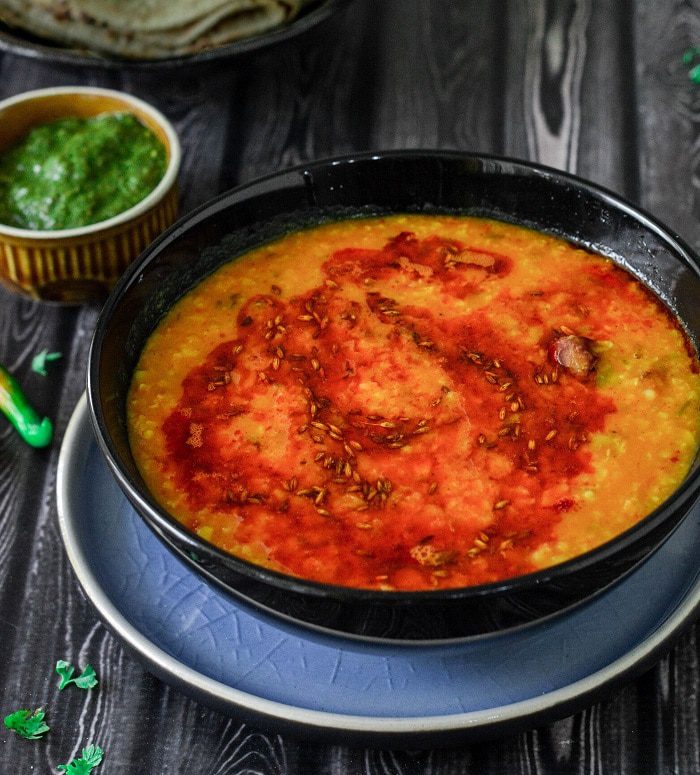
They add it not long before completing a tadka after adding dry flavors to ensure it doesn’t drink and turn out to be harsh. I frequently inquire as to whether garlic is fundamental in a tadka. And the short response is no: Many tadka don’t utilize garlic.
FAQs
What ingredients are needed to make tadka?
To make tadka, you will need oil or ghee, whole spices such as cumin seeds, mustard seeds, fennel seeds, curry leaves, and optionally, chopped onions, garlic, ginger, or green chilli peppers.
Can I use any oil to make tadka?
Yes, you can use any oil with a high smoke point, such as vegetable oil, canola oil, or peanut oil. Some people prefer to use ghee for its rich flavour.
How much tadka should I use in a dish?
The amount of tadka you use depends on the dish and your preference. Generally, start with a small amount and add more as needed.
Can I make tadka in advance?
You can make tadka in advance and store it in an airtight container in the refrigerator for up to a week. When ready to use, reheat the tadka in a pan before pouring it over the dish.
Can I make tadka without whole spices?
While whole spices are essential to tadka, you can also use ground spices such as cumin powder, coriander powder, and turmeric powder. Add the ground spices to the hot oil or ghee and fry for a few seconds until fragrant.
Final Thoughts
Tadka is a simple yet essential technique used in Indian cooking to enhance the flavor and aroma of a dish. Using whole spices and aromatics, tadka adds depth and complexity to various dishes, from dal to vegetables to rice.
Making tadka requires only a few essential ingredients and can be customized to suit your taste preferences. With practice and experimentation, you can learn how to make a perfect tadka every time and take your cooking to the next level.
